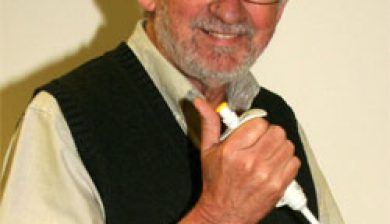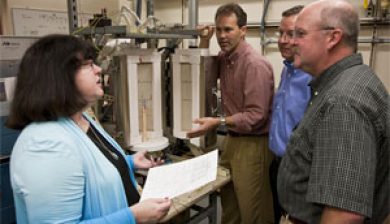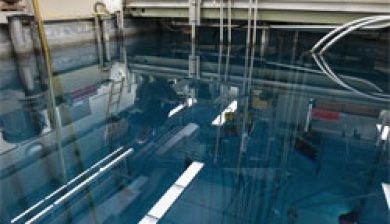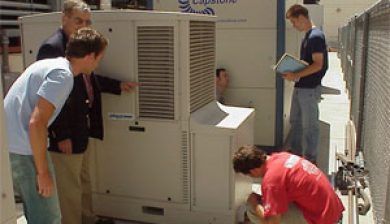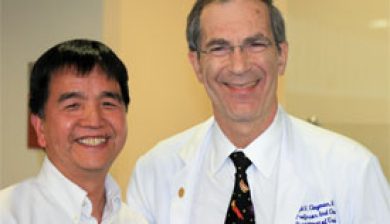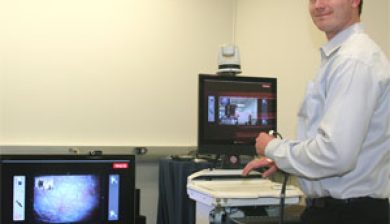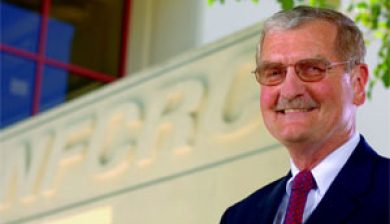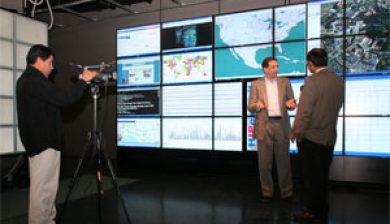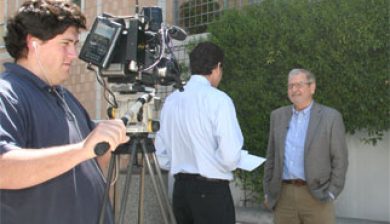Building a Better Biofuel
April 30, 2009 – Ethanol could be the grand prize in the U.S.’s race for environmentally neutral energy independence. It derives from natural products like corn and sugar cane, and is high-octane, clean-burning and renewable. But there’s a hitch. It is expensive to manufacture a
Read MoreApril 30, 2009
Comments are off
Cleaner, Meaner Coal
April 30, 2009 – While scientists continue to make steady progress in the search for alternative energy sources, one immutable fact remains: it takes time to develop and broadly implement revolutionary technologies – 20 to 30 years, most likely. Meanwhile, coal continues to supp
Read MoreApril 30, 2009
Comments are off
The Fuel Cell Generation
April 30, 2009 – In 1839, Welsh physics professor Sir William Grove had a bright idea. He knew that water could be split into hydrogen and oxygen by sending an electric current through it, but he wondered: if the process were reversed, could hydrogen and oxygen produce electrici
Read MoreApril 30, 2009
Comments are off
Atomic Age Appropriate
April 30, 2009 – Splitting a uranium atom produces 10 million times more energy than combusting a carbon atom from coal. It also produces widespread dissent. Proponents of nuclear energy cite its “clean” footprint, long-term availability and efficiency. One ton of uranium produc
Read MoreApril 30, 2009
Comments are off
(Sustainable) Power to the People
April 30, 2009 – Irvine, Calif., April 2009 — Developing sustainable energy technologies for the future is the mission at UCI’s Advanced Power and Energy Program (APEP). In addition to its fuel cell research, APEP scientists investigate combustion technologies, distributed
Read MoreApril 30, 2009
Comments are off
Meeting of the Minds Promotes Teamwork
April 23, 2009 – A gathering last week added important bedrock to CALIT2’s foundation of collaboration. The brainstorming-and-dinner session held at the new University Medical Center brought together 28 participants from CALIT2 with a comparable number from the School of Medicin
Read MoreApril 23, 2009
Comments are off
Telepresence System Renamed
April 21, 2009 – A software package developed by CALIT2 researchers that can transform laptops and PDAs into teleconferencing or telemedicine apparatuses has a new name. The interactive platform initially known as “HBox” is now “Telios” – Telepresence Interactive Operating Syste
Read MoreApril 21, 2009
Comments are off
NFCRC Participates in Residential Fuel Cell Tests
April 17, 2009 – UC Irvine’s National Fuel Cell Research Center, a CALIT2 partner center, will join forces with New York-based Plug Power to test the viability of the latest generation of fuel cell technology for providing electricity and heat to homes. The $3.4 million partne
Read MoreApril 17, 2009
Comments are off
Spinoff Company on Cable TV Show
April 16, 2009 – Hiperwall Inc., the software company spun off from CALIT2 research technology, will be featured in a report next month on World Business & Technology TV, a Northern California cable television station. Hiperwall, Inc. licenses custom software that allows use
Read MoreApril 16, 2009
Comments are off
Conference Seeks to Get Smart about Grid
April 10, 2009 – A “smart grid” that could efficiently and reliably provide electricity to power-hungry Southern California moved one step closer to reality this week. One hundred fifty researchers, faculty and students from industry, government and academia convened at CALIT2 a
Read MoreApril 10, 2009
Comments are off
© CALIT2, University of California, Irvine 2025

